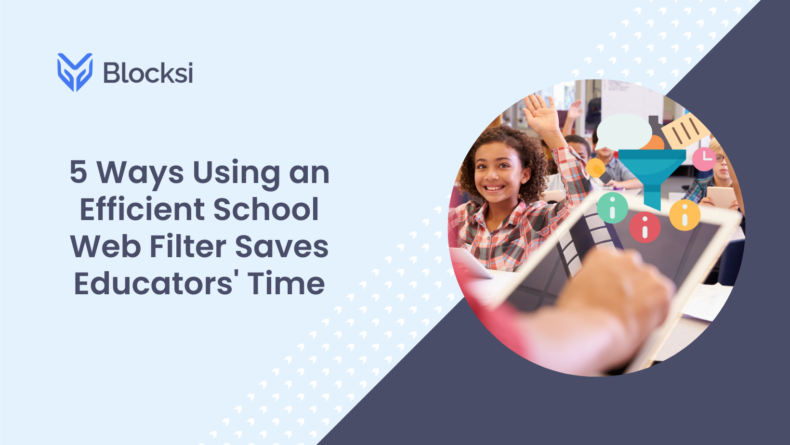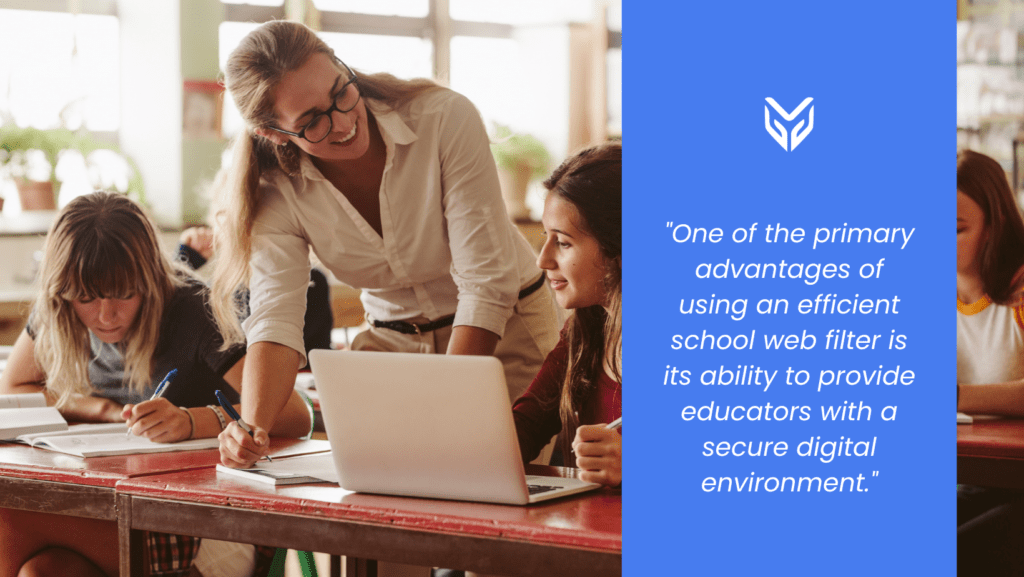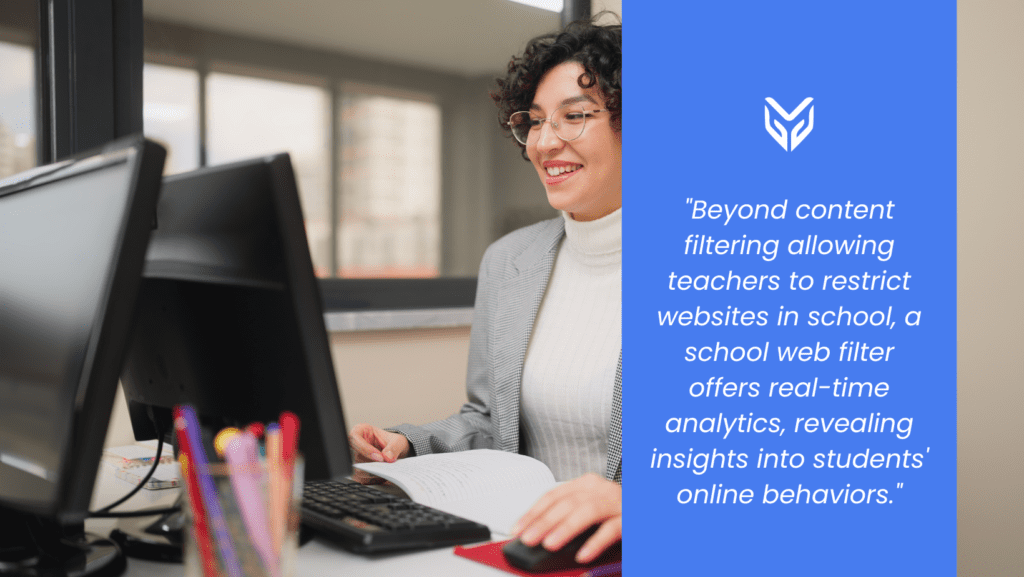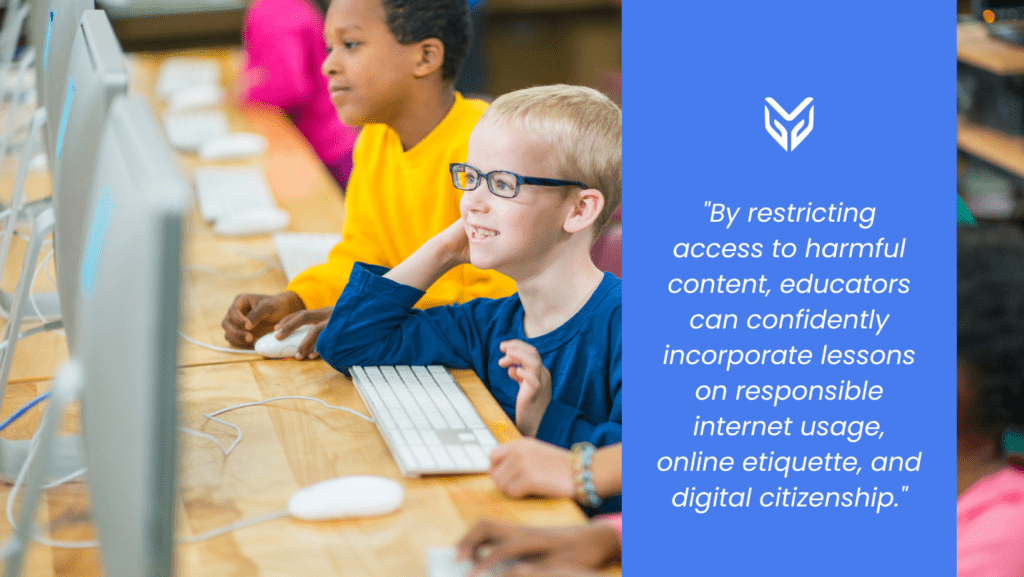NEWS
5 Ways Using an Efficient School Web Filter Saves Educators’ Time

Modern technology is now a part of any modern classroom, and technology plays a pivotal role in shaping students’ learning experiences. However, with the vastness of the internet, there’s a need for a vigilant guardian—enter a school web filter. This essential tool not only safeguards students but also becomes an unsung hero for educators, saving valuable time and allowing them to focus on what truly matters: teaching.
#1 Streamlining Lesson Planning with Confidence
One of the primary advantages of using an efficient school web filter is its ability to provide educators with a secure digital environment. With the assurance that students cannot access inappropriate content, teachers can seamlessly integrate online resources into their lesson plans. They no longer need to spend hours scouring the internet for suitable materials while worrying about the unpredictable nature of the web.

Active engagement becomes the focus as teachers confidently introduce interactive websites, educational videos, and collaborative platforms without fearing encountering unsuitable or distracting content. This streamlining of lesson planning not only saves time but also enhances the quality of educational content delivered to students.
#2 Safeguarding Students, Unleashing Educators
A robust school web filter not only restricts access to inappropriate content but also acts as a shield against potential online threats, blocking potentially dangerous content. This eliminates the need for educators to constantly monitor students’ online activities, freeing up valuable time that can be redirected toward fostering a more inclusive and supportive learning environment.
By entrusting the school content filter to safeguard students from harmful content, educators can focus on building meaningful connections, understanding individual learning needs, and tailoring their teaching methods accordingly. This shift from surveillance to mentorship empowers educators to be true facilitators of knowledge.
#3 Easier Teaching Planning With In-Depth Real-Time Analytics
Beyond content filtering allowing teachers to restrict websites in school, a school web filter offers real-time analytics, revealing insights into students’ online behaviors. Educators gain a nuanced understanding of digital engagement by examining metrics like webpage dwell time and popular search queries. Armed with this data, teachers can tailor lessons more precisely, adapting to student interests and addressing emerging trends promptly. Real-time analytics streamline lesson planning, ensuring a personalized and efficient teaching experience while saving educators valuable time.

#4 Eliminating the Need for Constant Monitoring
Without a reliable school web filter, educators may find themselves in a constant battle to monitor students’ online activities. This consumes time and adds extra stress to their already demanding roles. With an efficient filter, teachers can relinquish the need for constant vigilance and can focus on teaching instead.
The filter acts as a proactive gatekeeper, ensuring inappropriate content is blocked before reaching students. This liberation from the role of a digital watchdog allows educators to allocate more time to meaningful interactions, constructive feedback, and individualized support for their students.
#5 Enhancing Digital Literacy Education
Educators are increasingly tasked with preparing students for the digital landscape they will inevitably navigate. Content filtering for schools becomes an invaluable ally in this endeavor. By restricting access to harmful content, educators can confidently incorporate lessons on responsible internet usage, online etiquette, and digital citizenship.

Additionally, teachers can further support discipline and manage students’ behavior using features like the penalty box. After students violate content filtering policies, teachers can decide on time-based penalty boxes to promote students’ accountability and encourage them to use the internet responsibly. Thus, the school web filter becomes a tool for both content filtering and shaping responsible digital citizens, further enriching learning.
Pick Your School’s Number 1 Support for Effective Teaching and Student Safety
Content filtering for schools stands as a foundational element in your school’s safety plan. It shields your network and devices internally, fortifying against potential security threats. Moreover, it is a vital starting point for integrating essential technologies such as classroom management and student-at-risk detection software.
Blocksi content filtering seamlessly complements other Blocksi solutions, including classroom screen monitoring and student safety. By combining our advanced classroom management solution with potent K-12 threat detection and concise analytics, you can uplift both learning and teaching, proactively identify at-risk students and ensure students’ engagement and overall well-being.
For more information on selecting the best web content filter for your school, find out more about Blocksi Content Filtering on this datasheet and reach out for more information through the button below.
SOURCES





